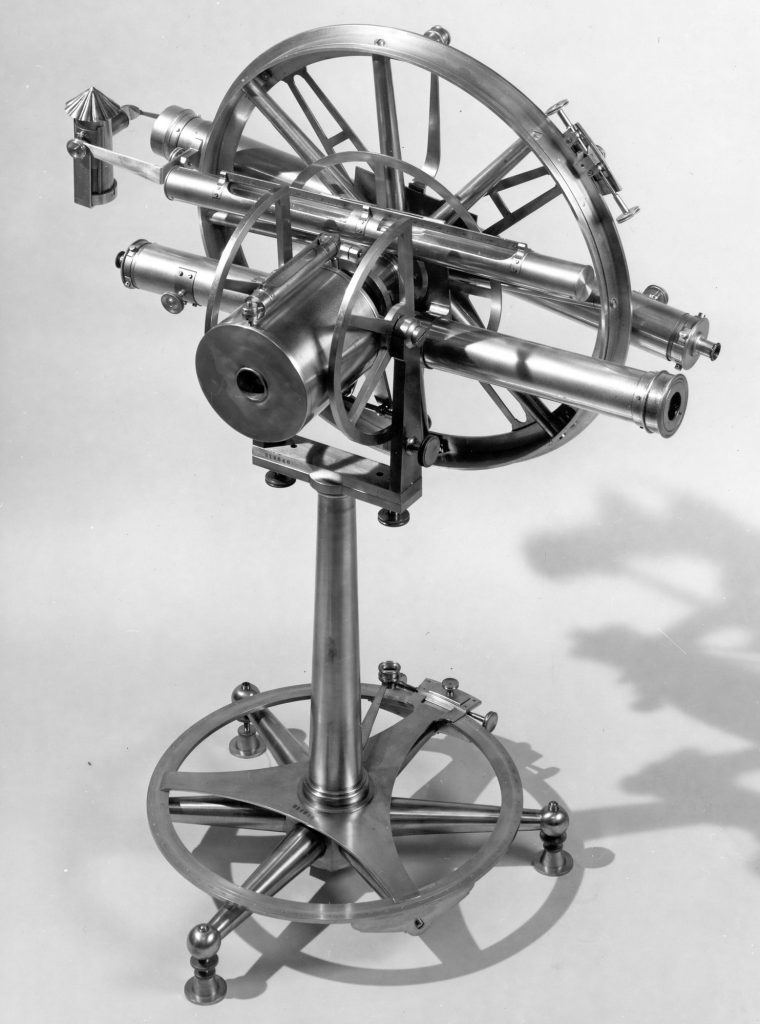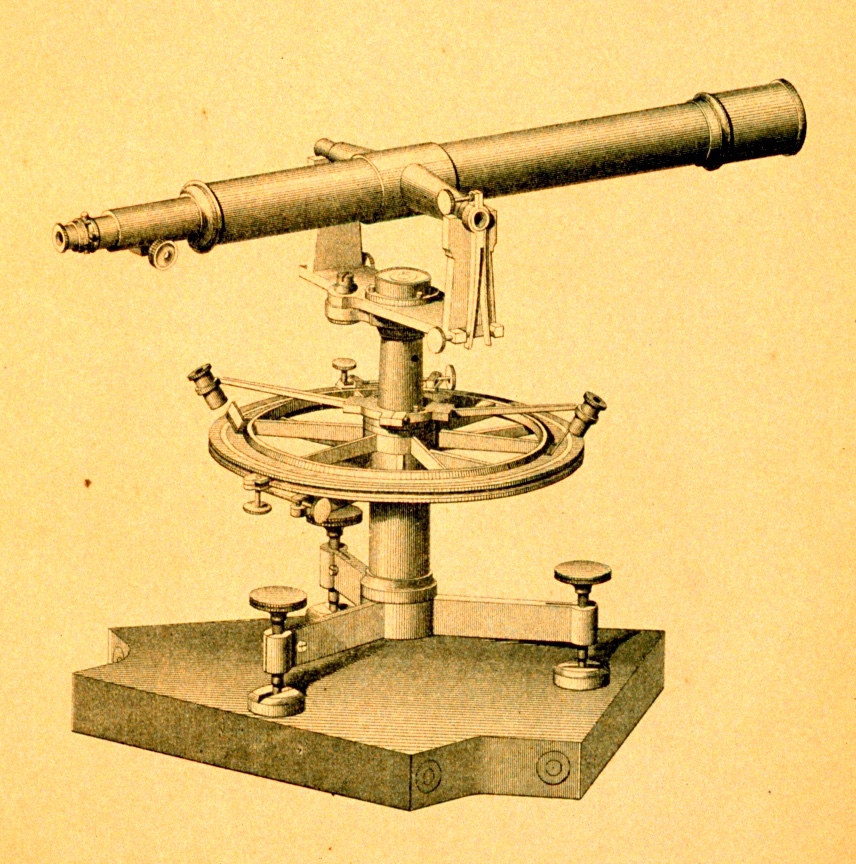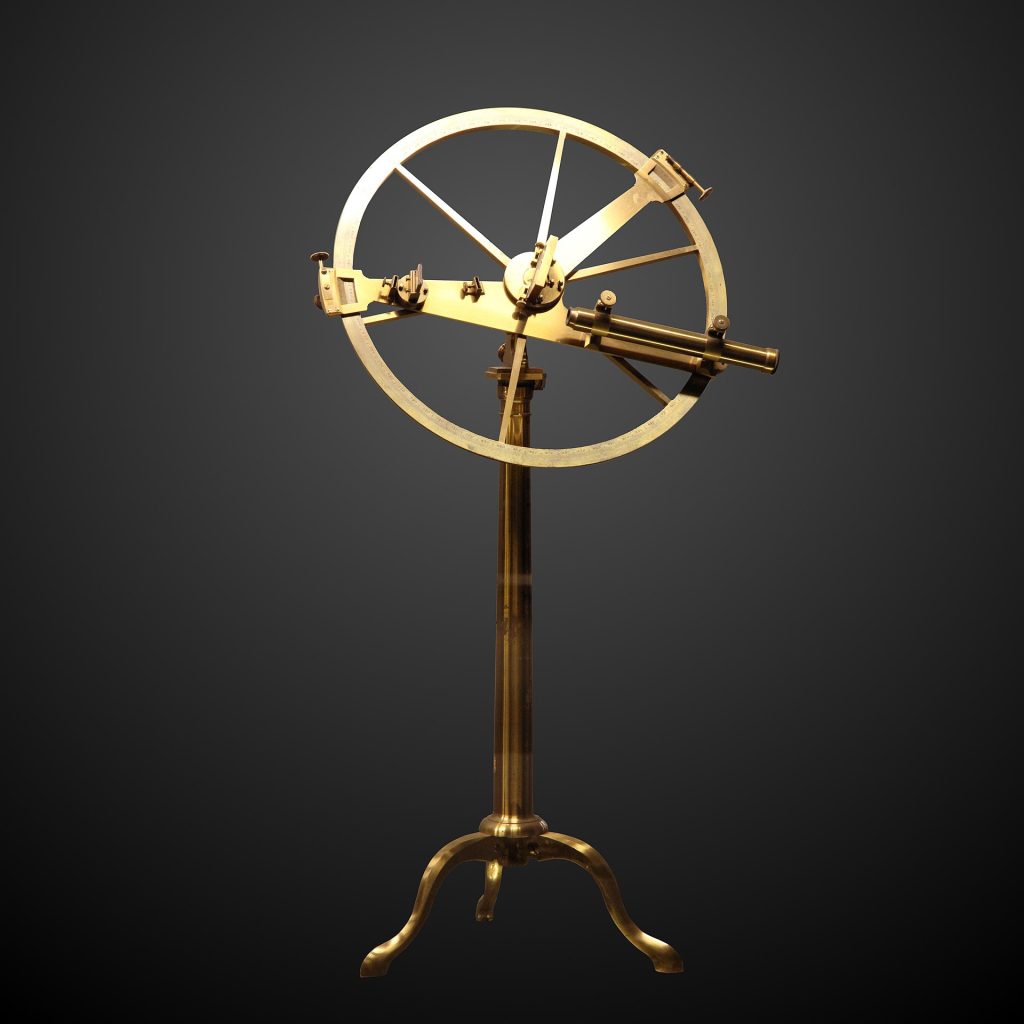The Metre (meaning measure) was one ten-millionth of the distance from the North Pole to the Equator! France embarked on a first large scale measurement. It took 7 years to measure the distance from Dunkirk to Barsalona. They used triangulation with an instrument called the Repeating Circle along with trigonometry.
The standardization of measurement: the Metre
Creating the Metre – a universal standard
By the 16th century, there we over 250,000 weights and measures in Europe. This effected trade, navigation, building plans, etc. Fire hoses would not connect from town to town. France chose to create a standard by measuring something unchangeable. They chose the Earth. Before this standardization, the human body (the Ruler of the land) would make new measurements upon gaining power.
The Repeating Circle

DESCRIPTION
This is one of two double repeating circles that Ferdinand Rudolph Hassler, the first superintendent of the U. S. Coast Survey, ordered from Edward Troughton in London in 1812, and that was shipped in 1815. The large circle may be angled from vertical to horizontal to the opposite vertical position. It is graduated to 10 minutes, and read by four verniers and two magnifiers to single minutes.
A repeating circle is a geodetic instrument with two telescopes that is designed to reduce errors by repeated observations taken on all parts of the circumference of a circle. The form was developed by the Chevalier de Borda, first executed by Etienne Lenoir in Paris around 1789, and popular for about 50 years.
Ref: F. R. Hassler, “Papers on Various Subjects Connected with the Survey of the Coast of the United States,” Transactions of the American Philosophical Society 2 (1825): 232-420, on 315-320 and pl. VII. “The Repeating Circle Without Reflection, as made by Troughton,” in The Cyclopaedia: or, Universal Dictionary of Arts, Sciences, and Literature, edited by Abraham Rees (London, 1819), Vol. VII, Art “Circle.”
Image credit:
NAME: repeating circle MAKER: Troughton and Simms PLACE MADE: United Kingdom: England, London MEASUREMENTS: overall: 32 1/8 in x 26 3/4 in x 17 in; 81.6356 cm x 67.945 cm x 43.18 cm upper circle: 17 1/2 in; 44.45 cm circle at base: 13 1/2 in; 34.29 cm telescope: 24 in; 60.96 cm overall; base: 16 3/4 in x 15 1/4 in x 16 in; 42.545 cm x 38.735 cm x 40.64 cm overall; horizontal circle: 13 in x 23 in x 20 in; 33.02 cm x 58.42 cm x 50.8 cm ID NUMBER PH.314640 CATALOG NUMBER 314640 ACCESSION NUMBER 208213
The Repeating Circle History
Developed from the reflecting circle, the repeating circle is an instrument for geodetic surveying, invented by Etienne Lenoir in 1784, while an assistant of Jean-Charles de Borda, who later improved the instrument. It was notable as being the equal of the great theodolite created by the renowned instrument maker, Jesse Ramsden. It was used to measure the meridian arc from Dunkirk to Barcelona by Jean Baptiste Delambre and Pierre Méchain (see: meridian arc of Delambre and Méchain). Source Wikipedia
12” Repeating Circle

The repeating circle is made of two telescopes mounted on a shared axis with scales to measure the angle between the two. The instrument combines multiple measurements to increase accuracy with the following procedure:
Repeating Circle Mode of Operation:

(1) The instrument is aligned so its plane includes the two points to be measured, and each telescope is aimed at a point;
(2) Keeping the angle between the telescopes locked, the left (black) telescope is rotated clockwise to aim at the right point;
(3) the right (gray) telescope’s position is noted, and it is rotated back to the left point.
At this stage, the angle on the instrument is double the angle of interest between the points. Repeating the procedure causes the instrument to show 4× the angle of interest, with further iterations increasing it to 6×, 8×, and so on. In this way, many measurements can be added together, allowing some of the random measurement errors to cancel out.
Borda Reflecting Circle

The calculation of longitudes, indispensable for determining a ship’s exact position at sea, was not possible until the octant’s invention in the 18th century, though it lacked sufficient precision. The French mathematician Charles de Borda finally solved this problem by inventing the reflection circle.
Graduated to 720°, Borda’s circle enables the measurement of an angle between two celestial bodies. First the instrument’s telescope is aimed at a celestial body, then a second time via a small semi-reflecting mirror in the middle of the circle. This double measurement limits errors and improves the precision of measurements.
Borda carried out several tests during expeditions to the Caribbean and perfected the instrument, giving it its definitive form around 1777. This example was formerly in the physics cabinet of Jacques Alexandre César Charles.
Sources: Wikipedia, Google, Measurement history BBC Precision The Measure of All Things 1 of 3






























